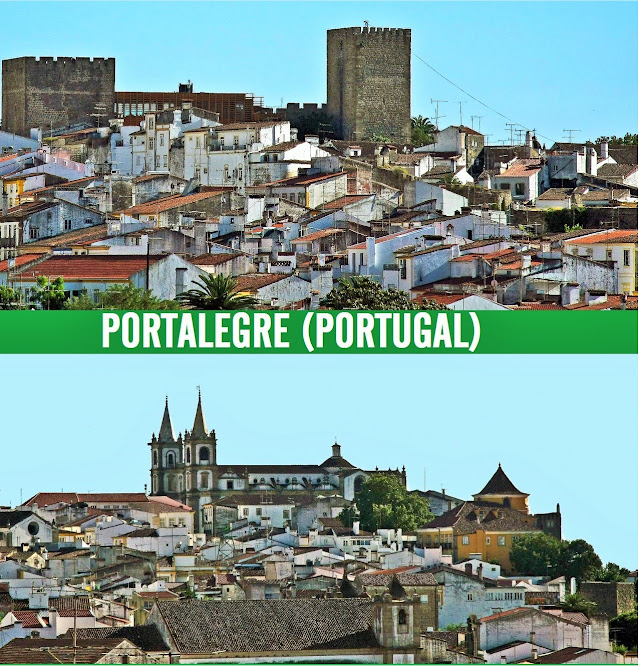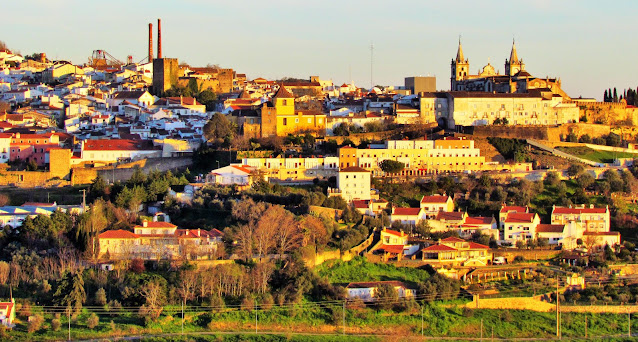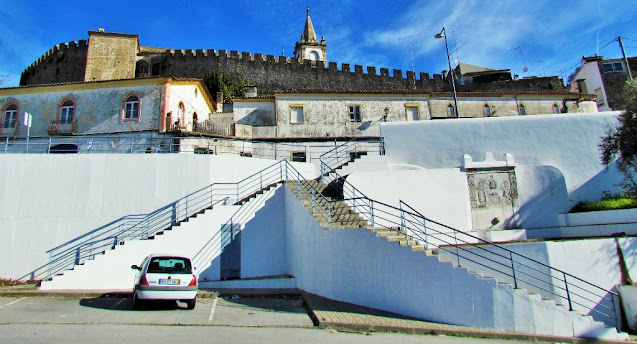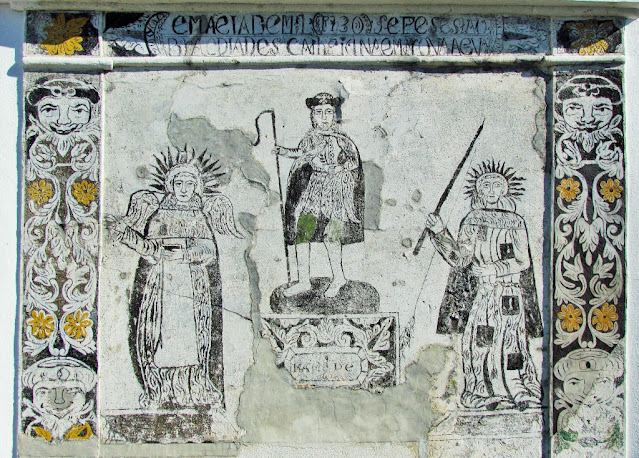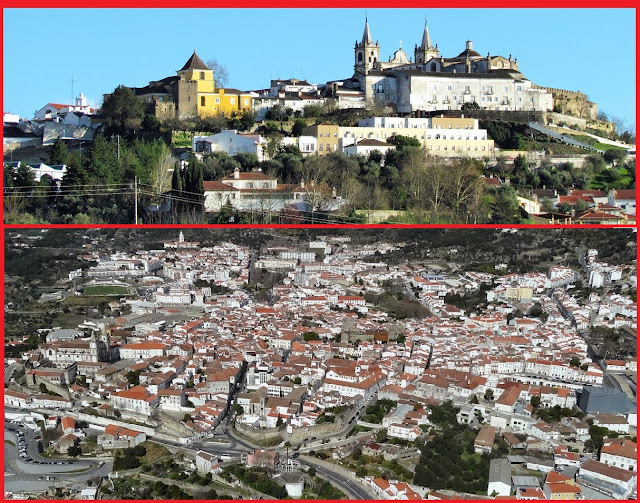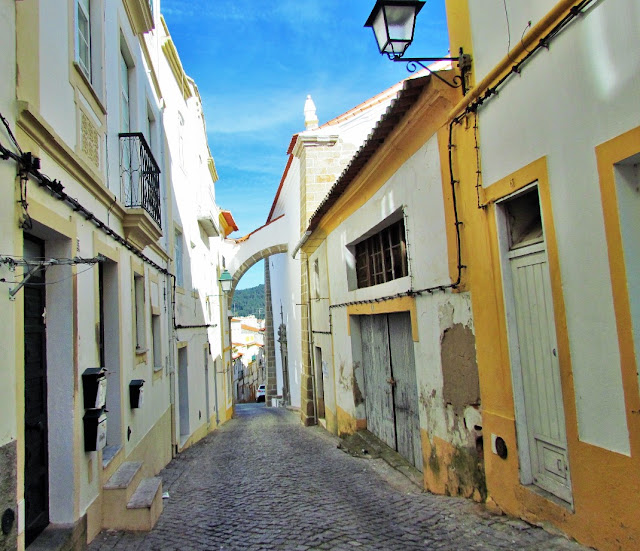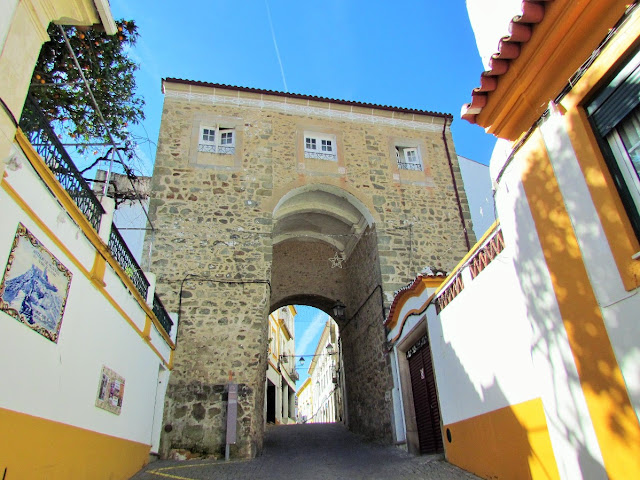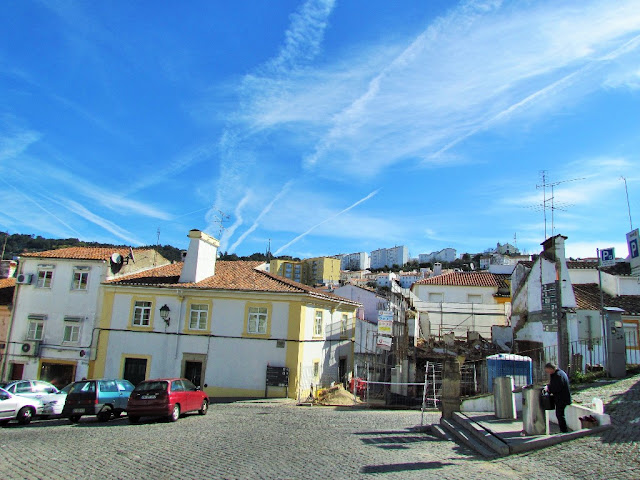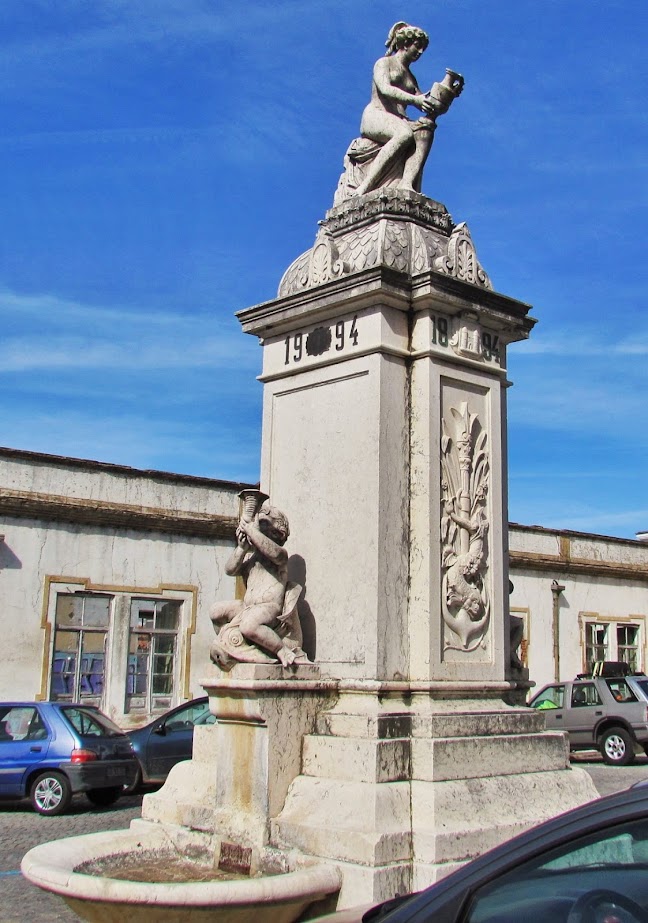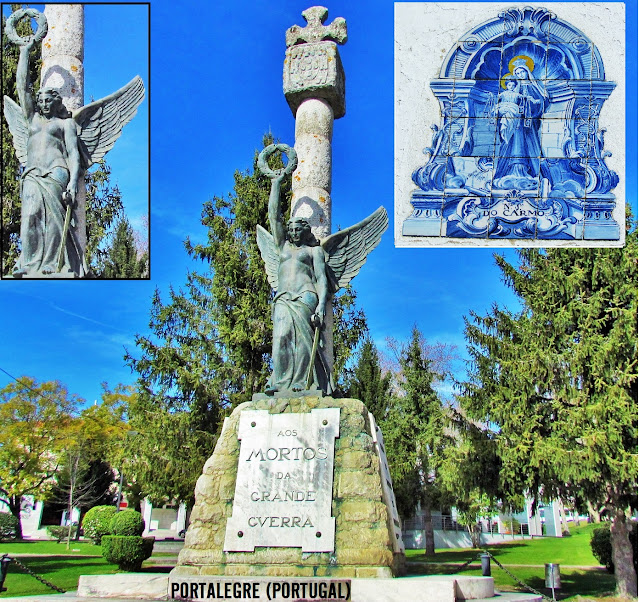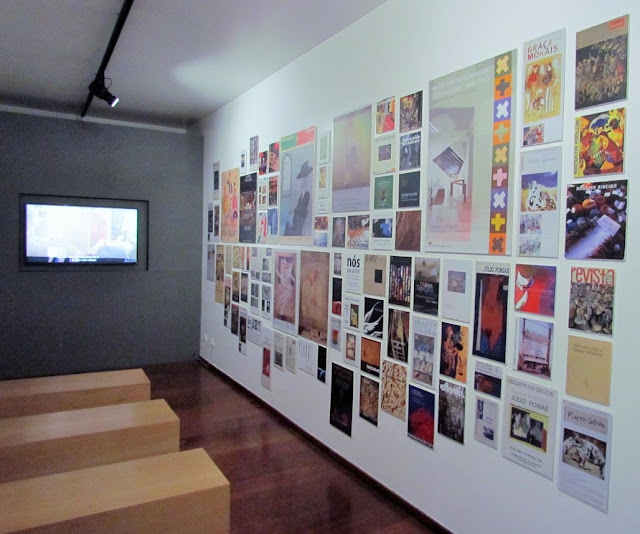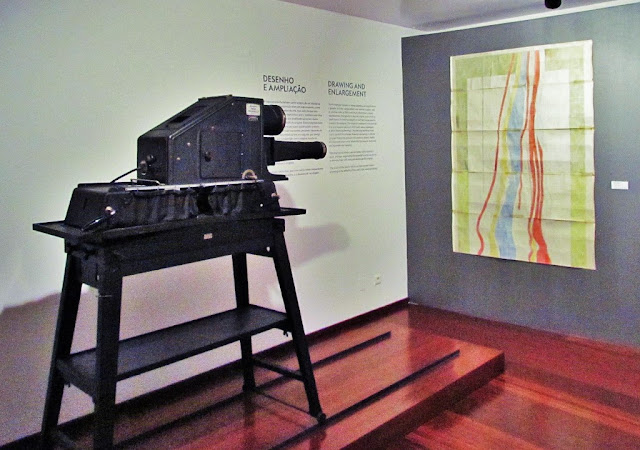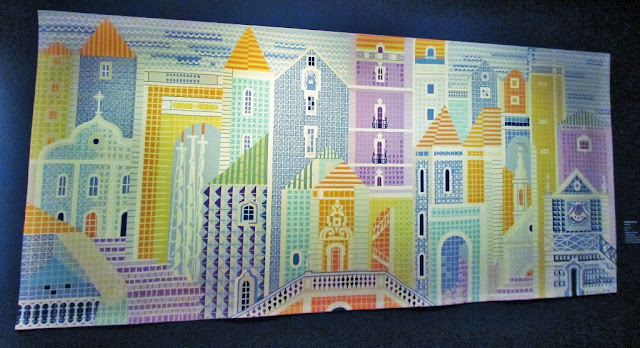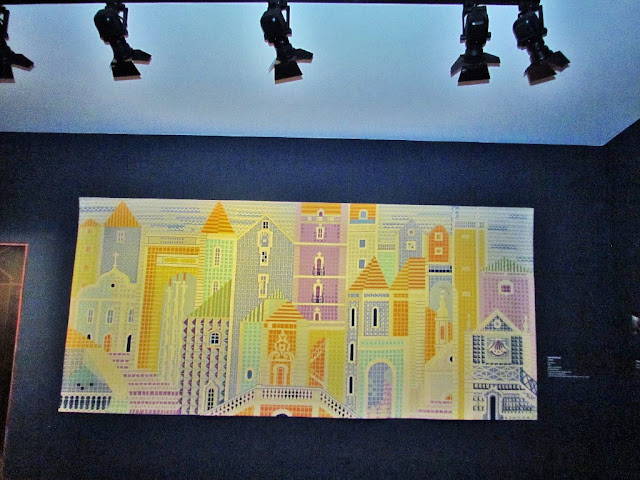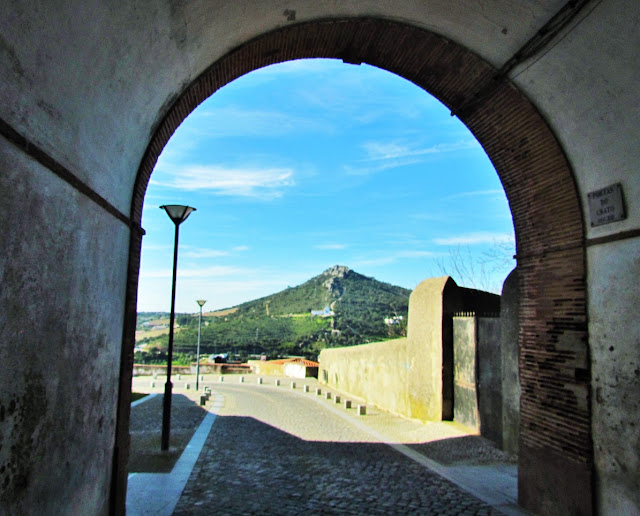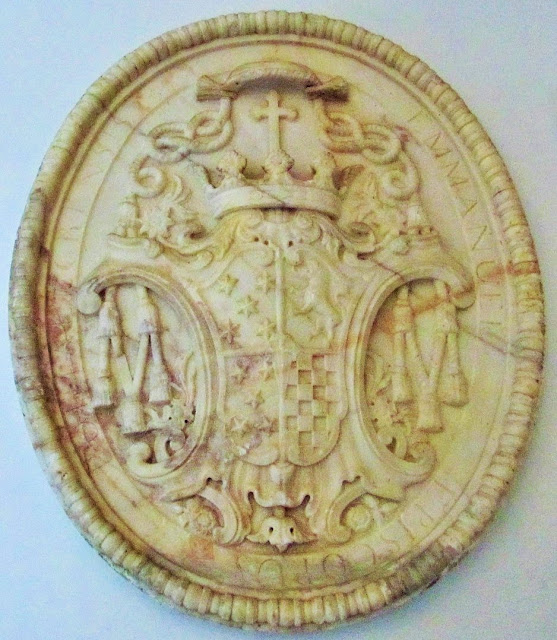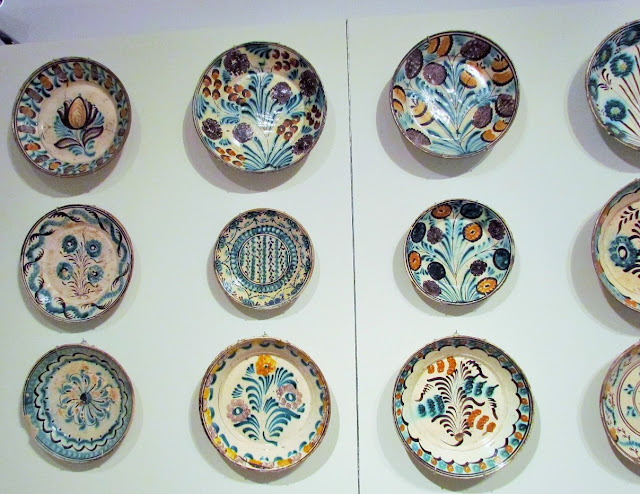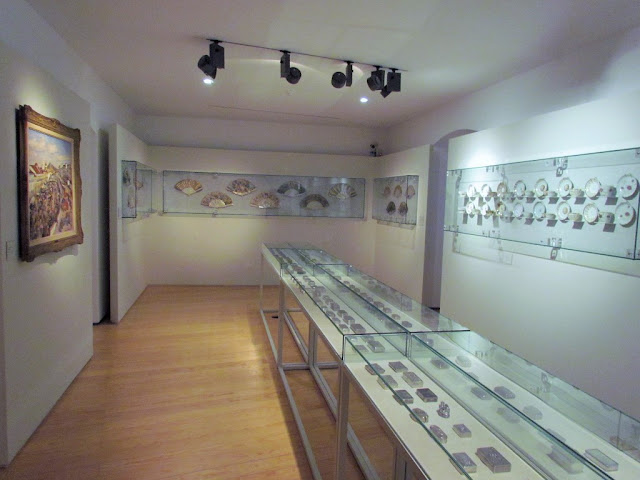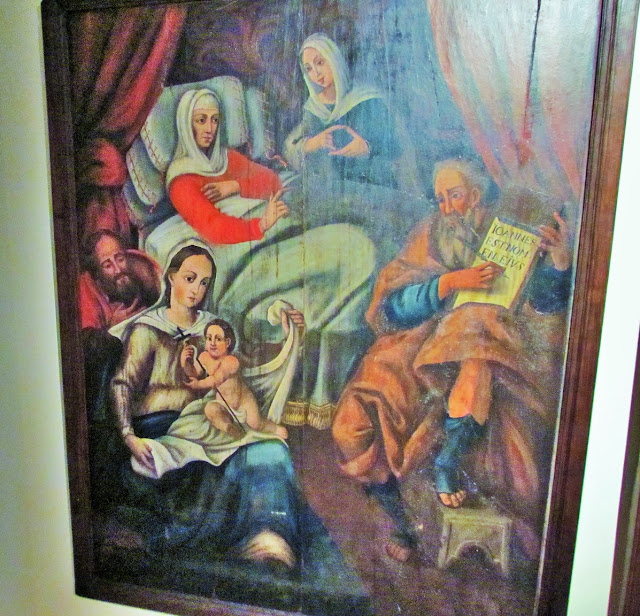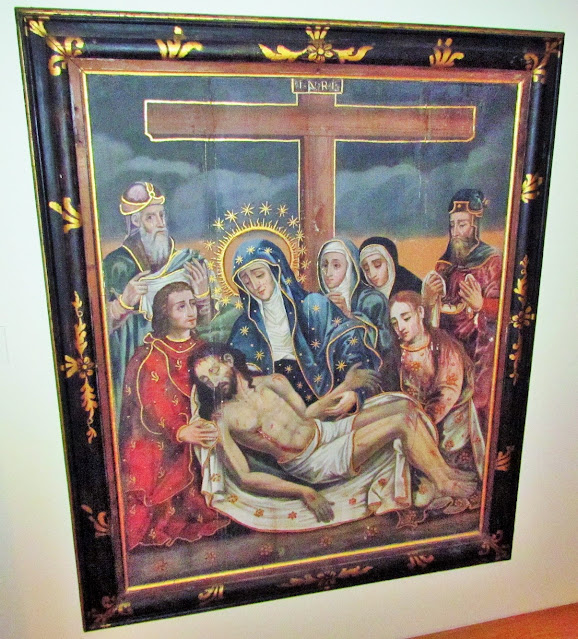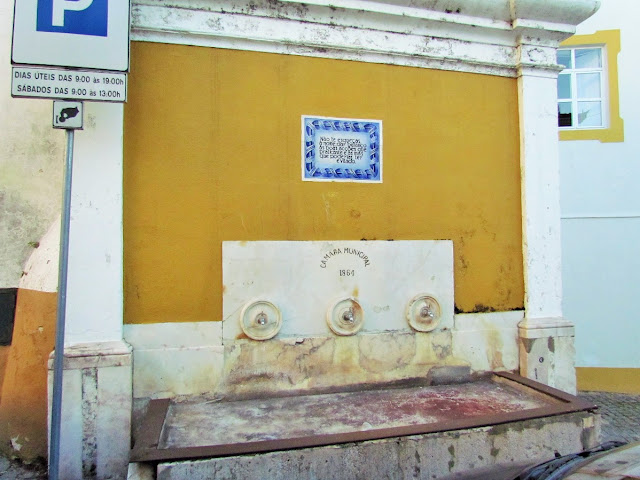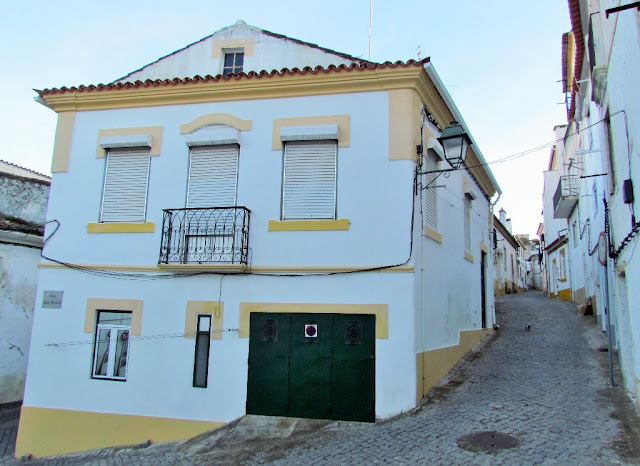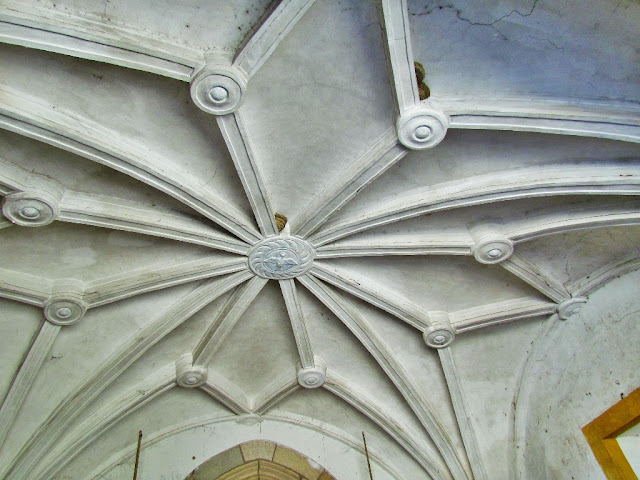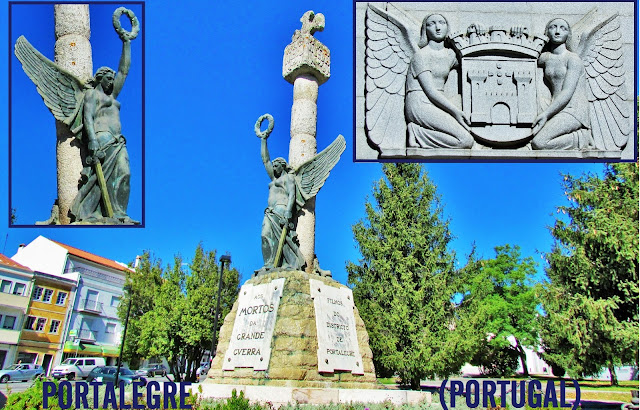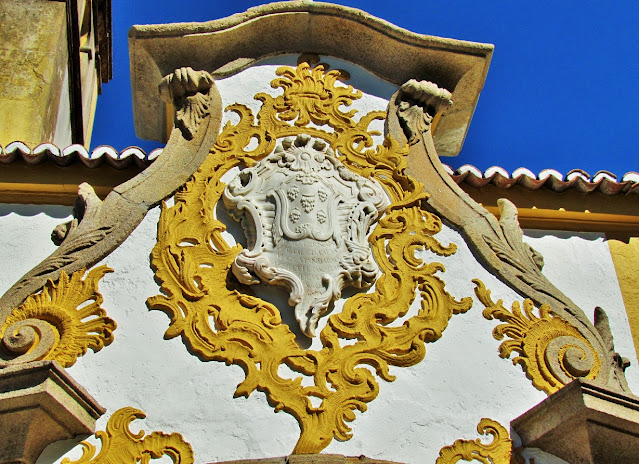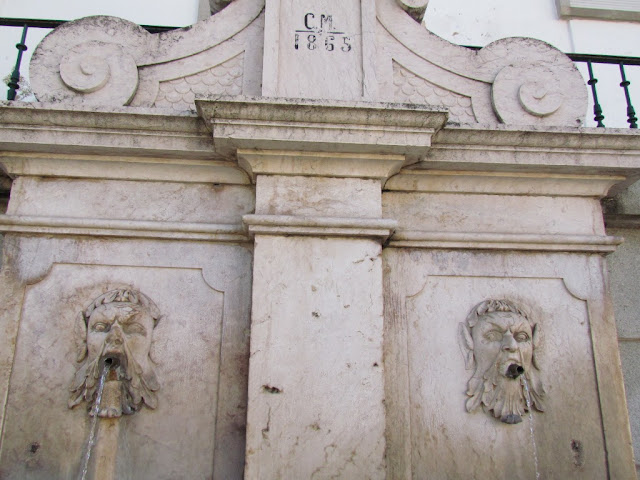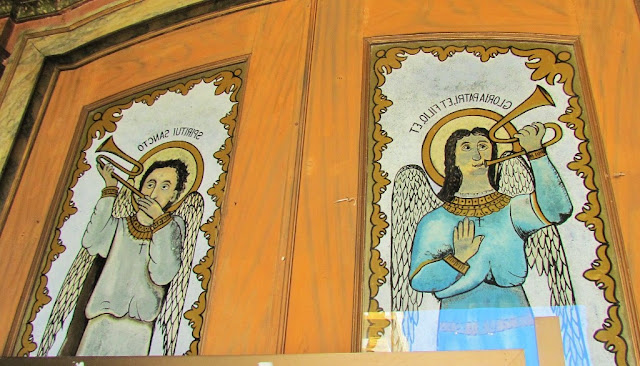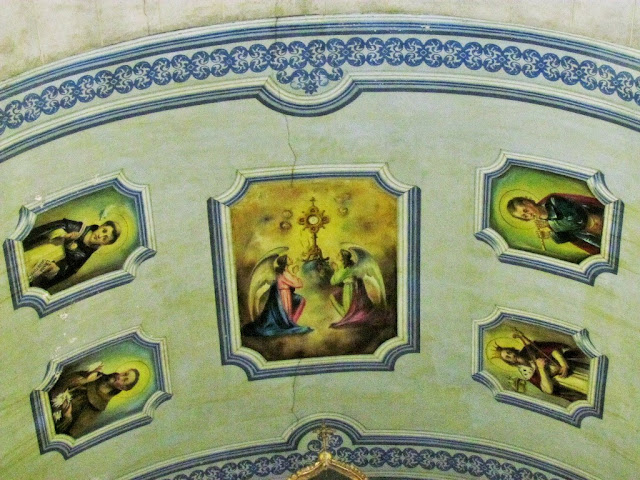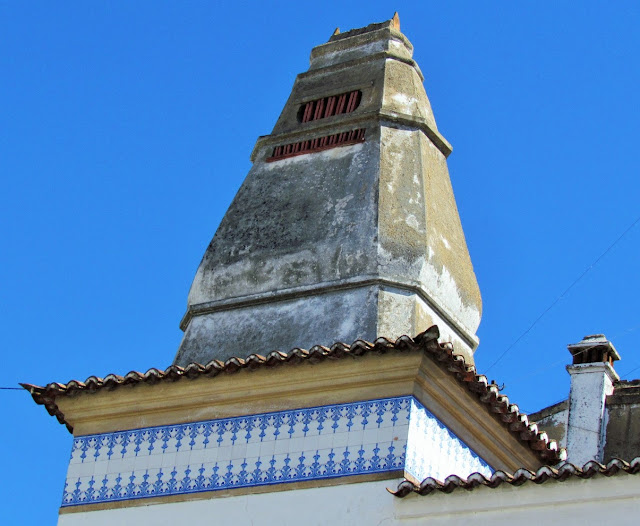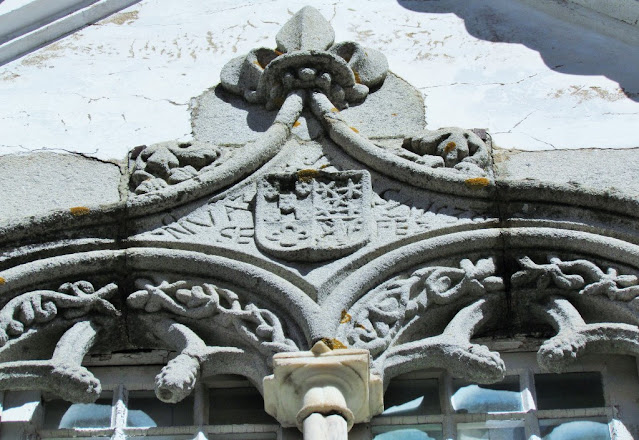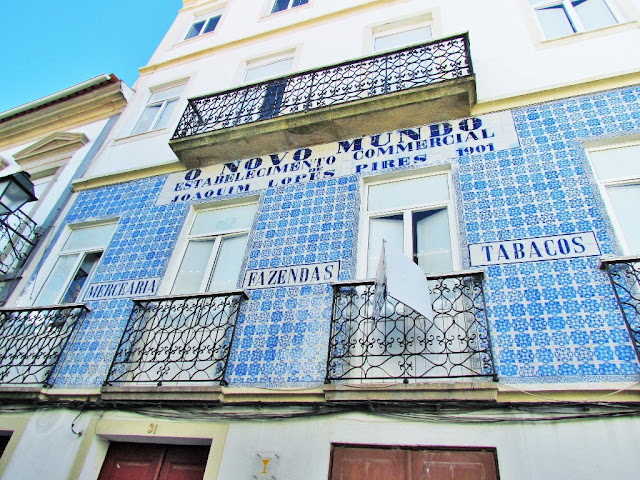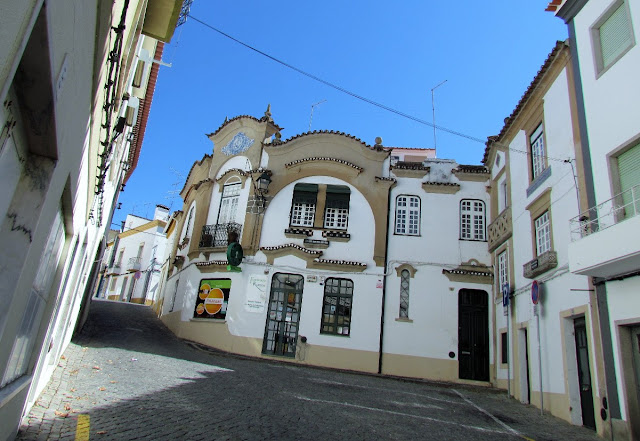PORTALEGRE
N 39. 29772º; W 7.44256º
Portalegre is the district capital city with the least population in Portugal and the largest city in its district.
It is the seat of a municipality with an area of 447.14 km² and 21 868 inhabitants (2012), subdivided into 7 parishes. The municipality is limited to the north by the municipality of Castelo de Vide, to the northeast by Marvão, to the east by Spain, to the south by Arronches and Monforte, and to the west by Crato.
Although the landscape of the municipalities to the north of Portalegre is still typically Alentejo, with relatively flat areas alternating with hills in most cases relatively low, Portalegre is often described as a transition zone between the drier and flat Alentejo, and the Beiras, more humid and mountainous. The orography is more varied than in most of the rest of the Alentejo, which contributes to the landscape having peculiar characteristics.
The city is at an altitude between 400 and 600 meters, in the transition zone between the relatively flat landscape, but with many low hills to the south and west, and the mountainous system of Serra de São Mamede, which surrounds it north, east, and southeast.
The geology is varied, which translates into a variety of soils, with areas of shale, grade values, limestones, and quartzites.
The unique characteristics of the landscape, flora, and fauna, are at the base of the creation of the Serra de São Mamede Natural Park, which integrates a considerable part of the area of the municipality.
Portalegre's climate is Mediterranean and temperatures fluctuate considerably between the warmest and coldest months. In winter, temperatures can drop below 0 ° C and (maximum) temperatures in summer can reach values around 38 ° C / 39 ° C. The high temperatures occur because this city is in Alentejo, Portugal's hottest region in the summer. The highest and lowest temperatures recorded in Portalegre in the 1971-2000 period were 40.4 ° C and -4.5 ° Ç.
Sources
The city of Portalegre and its surroundings have more than 30 historical sources. Until the end of the 19th century, piped water was practically limited to sources, and only from the 40s of the 20th century can we speak of piped water at home. The sources of Portalegre start, therefore, by constituting urban furniture with utilitarian characteristics.
Viewpoints
Miradouro de Santa Luzia - Located in Serra de Portalegre (679 m), on the road to Salão Frio, north of the city. 39 ° 18 '16.4 "N 7 ° 25' 25.5" O
Miradouro da Penha - Located in the churchyard of a 17th-century chapel on the hillside of Serra da Penha, west of the city.
Miradouro das Carreiras - Located in the village of the same name, it is a panoramic place of great natural landscape beauty. In the parish of Carreiras, there are also sections of medieval pavement that are worth visiting.
Summit of Serra de São Mamede - Located at 1,025 m above sea level, it is the highest point in mainland Portugal south of the Tagus. From there you can see the Apartadura dam, the village of Marvão, the Serra da Estrela and part of Spanish Extremadura.
Portalegre Tapestries
The Portalegre Tapestry Manufacture manufactures decorative mural tapestries using a totally manual technique unique in the world, based on the so-called Portalegre stitch, invented by Manuel do Carmo Peixeiro, which was inspired by the French tapestries of Roubaix and the traditions of weaving wool from the interior of the country, strongly implanted in Portalegre since the Middle Ages.
The starting point of any tapestry is the work of a renowned painter, Portuguese or foreign, with which contracts are established regarding copyright for the woolen recension of the work.
The Portalegre Guy Fino Tapestry Museum has on display several Portalegre tapestries.
The Portalegre Tapestry Manufacture started to be installed in 1947 in the old Jesuit convent and college of São Sebastião, which in the 18th century was converted into the Royal Wool Factory of Portalegre by order of the Marquis of Pombal. This building has been the seat of the city council since 2005, and the manufacture was transferred to a building next to the convent of São Francisco.
The house museum of José Régio, a famous Portuguese poet, was installed in his home, in which he lived for 34 years. When Régio was accepted at the high school of Mouzinho da Silveira, in Portalegre, this place was a hostel. It was previously an annex of the convent of S. Brás, of which there are still some vestiges, namely the chapel. It also served as a headquarters when the peninsular wars were fought, but it was later named Pensão 21.
José Régio rented a humble room and, as he needed more space (he collected several works of art, amongst which more than 400 representations of Christ), he would rent more space. So, as time went by, he finally became the only inhabitant of the hostel. In 1965, he sold his collection to the municipality of Portalegre with the condition of it buying his house, restoring it, and transforming it into a museum. He lived there until he died, in 1969. The museum opened to the public in 1971.


SÉ (CATHEDRAL)
The Cathedral of Portalegre is located in the city of Portalegre in Portugal, it was built in the place where the church of Santa Maria do Castelo used to be, by King John III.
The church began to be built in 1556, the last stone of the vault was placed in 1575 and it was completely finished in the same century.
Inside the temple.
The interior of the cathedral consists of three naves with barrel vaults, semicircular arches and ribs. The pulpits are made of marble stone, the same as the steps that are in front of the main chapel.
The main altar is made up of eight panels of an altarpiece. To the right is the Chapel of the Blessed Sacrament and to the left that of San Pedro.
Each bell tower has four openings with rounded arches, where the bells are placed.
The entire building has twenty-eight stained glass windows and the façade is from the 16th, 17th and 18th centuries.
The north side façade is made up of six pilasters. The one on the south side is similar in every way, being, however, turned towards the cloister.
In 1795, by order of Bishop Manuel Tavares, it was restored, and with the impulse of the reforms of the cathedral, he enlarged the episcopal palace, built his own house for the Ecclesiastical Archives and ordered the construction of the church of Santiago. This year is when the Cathedral of Portalegre was left as we finally know it.
Curiosities
The pavement is made up of 11,600 bricks
The roof contains 16,570 tiles
It has 20 stone columns









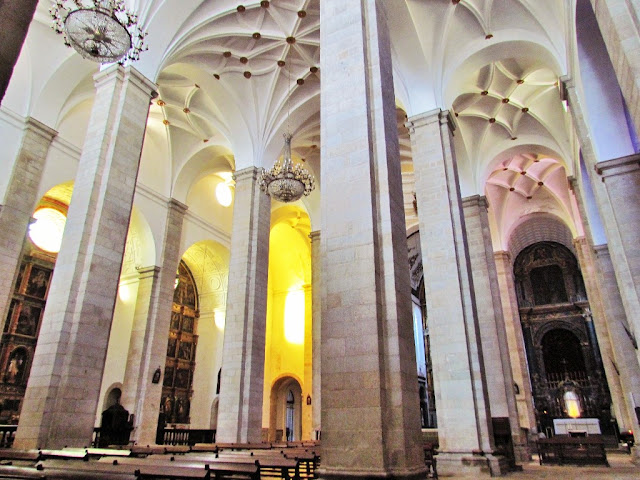














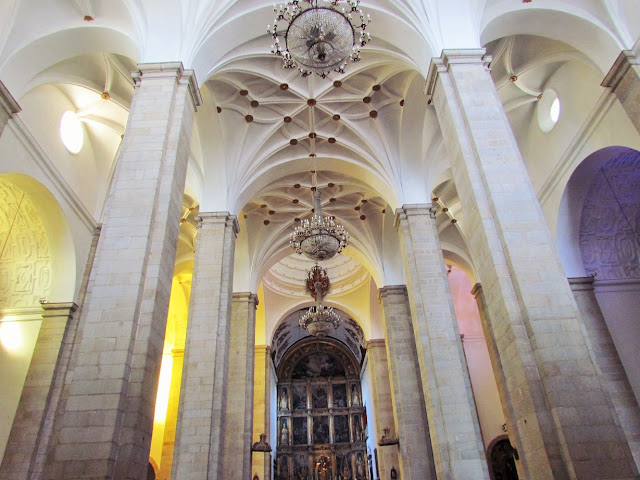


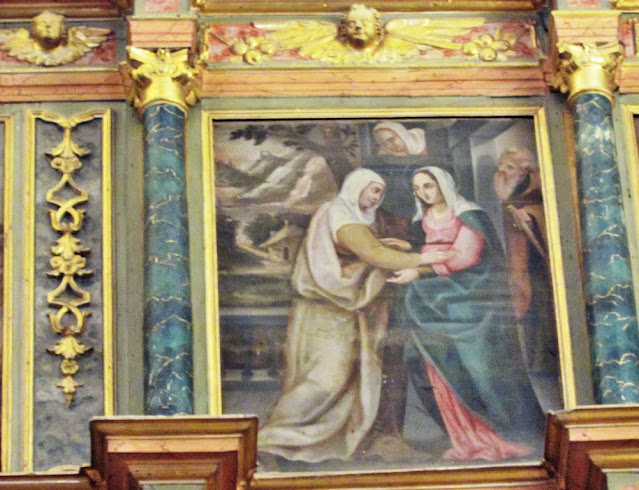



💛💛💛💛
CASTLE OF PORTALEGRE
The Castle of Portalegre is located in the parish of Sé and São Lourenço, city and municipality of Portalegre, Portugal.In a dominant position over the village, it stands out for the contrast between the dark color of its walls and the whitewash of the surrounding houses. Its original function was the defense of the Alentejo border, against Castile.
Historical information dates back only to the time of the Christian Reconquest of the Iberian Peninsula when D. Afonso III (r. 1248–1279) granted the first charter to the village (1259) and ordered the construction of the first fortifications, which were never completed.
During the Modern Age, the town's walled fence underwent reinforcement works. In the 16th century, the vault of the keep was rebuilt, now with a polynervated structure, presumably replacing the primitive Gothic system of crossings, then in ruins.
In the context of the War of Restoration, the defense of this stretch of the border regained strategic importance. For this reason, works were started to modernize and reinforce the defensive set, which were carried out between 1641 and 1646, adapting it to the artillery fire of the time.
During the War of the Spanish Succession, the village's defenses proved insufficient, and it was occupied by Spanish-French troops in 1704.
In 1801 Portalegre was conquered by the Spaniards during the War of the Oranges.
During the Peninsular War, Portalegre revolted against invading Napoleonic troops stationed in the region in 1808 commanded by the French General Loison.
💛💛💛💛💛
TAPESTRY MUSEUM
Installed in the former noble house of the Caldeira Castelo-Branco family (18th century portal), the Tapestry Museum of Portalegre – Guy Fino is a museum specifically dedicated to the presentation, conservation and study of a fundamental part of the national artistic heritage, represented by the Tapestries from Portalegre.
There are two distinct nuclei, one of which presents the historical component relating to the Manufacture of Tapestries in Portalegre, as well as the technical processes involved in the execution of the Tapestry itself; the other, on the other hand, is dedicated to the exclusive presentation of tapestry works, following the chronology of the Tapeçaria de Portalegre, since its birth – the end of the 40s of the 20th century. XX -, until the present.
Contacts
Address: Rua da Figueira, n.º 9, 7300-139 - Portalegre
Tel: 00 351 245 307 530
Opening hours.
Summer opening hours: 9:30 am to 1 pm and 2:30 pm to 6 pm // Winter opening hours: 9 am to 12:30 pm and 1:30 pm to 5 pm // Closing: Mondays (and on the dates of January 1st, Good Friday, Easter Sunday, May 1st and 25 December).
💛💛💛💛💛
MUNICIPAL MUSEUM
Collections
Sacred Art — This is the museum's most important collection, both in terms of quantity and relevance. Most of it comes from the most important convents in the city — Santa Clara (14th century) and São Bernardo — and from private donations. Highlights include, among others, an Indo-Portuguese ivory sculpture of Nossa Senhora da Conceição, a Flemish Pietá from the 15th century, a Namban missal stand from the 16th century and an altarpiece from the same century with passages from the life of Christ in polychrome terracotta.
Portuguese earthenware — The pieces on display allow you to follow the history of earthenware made in Portugal, from the 17th century to the beginning of the 20th century. Noteworthy are the blue and white crockery pieces made with an oriental influence and the curious "mouse" dishes, an expression of the seasonal migrants who moved from the Beiras to the Alentejo during the harvest season.
Furniture — D. João V and D. José styles predominate, Gothic pieces. There is also a Renaissance armoire in northern oak.
Painting — Several works by contemporary Portuguese artists stand out, such as Manuel d'Assumpção, João Tavares, Arsénio da Ressurreição, Benvindo Ceia, Abel Santos and Artur Bual.
Santo António's — Made up of more than 700 pieces on various supports.
Snuffboxes — in silver and other materials.
The first car that circulated in Portalegre is also on display, a voiturette from the French factory Clément, Gladiator & Humber.
💛💛💛💛💛
JOSÉ RÉGIO HOUSE MUSEUM
The Casa Museu José Régio in Portalegre is a museum located in the house where the writer José Régio lived for 34 years. It is both a biographical and an ethnographic museum, as in addition to being a writer, Régio was an avid collector.
Jose Regio
José Régio is the pseudonym of José Maria dos Reis Pereira, a professor, poet, novelist, playwright, essayist and critic, founder of the literary magazine Presença and collaborator of the literary magazine Seara Nova. He was a Portuguese teacher at the then Liceu Nacional de Portalegre (current Escola Secundária Mouzinho da Silveira), from 1928 to 1967. One of his most famous poems is the Toada de Portalegre, in which he mentions the house where the museum currently operates:
“I lived in an old/old, big, rough and beautiful house/which I wanted as if it were made for me to live in”
The museum breathes the atmosphere in which José Régio, adopted from Portalegre, lived. The poet's bedroom and workroom are just as he left them.
The building
It dates from the end of the 17th century and would have been an annex to the Convent of São Brás, of which there are still some traces, namely the chapel. It served as headquarters during the Peninsular War (aka the French invasions) and much later was a boarding house.
When José Régio stayed at the pension when he arrived in Portalegre, he started by renting a modest room, but as time went by and his need for space increased, he occupied more rooms, eventually becoming the only guest.
In addition to his literary activities, José Régio was a great collector, mainly of sacred art, folk art and handicrafts. In 1965 he sold his collections to the Municipality of Portalegre with the condition that it would acquire the house, restore it and transform it into a museum, with him remaining in usufruct until his death. This did not happen, as José Régio would die on December 22, 1969, while the museum would only open on May 23, 1971.
Before dying, the writer returned to his homeland, Vila do Conde, where he also managed to open a museum in his own home.
Estate
The museum's collection resulted from José Régio's taste for antiques and collecting, which, he says, was born to him early on under the influence of his grandfather, but it was in the Alentejo that he expanded and developed. The region was fertile for this activity, and it quickly spread that there was a high school teacher who bought old things. It started out as a hobby but quickly turned into a regular activity, almost an addiction. Among the vast number of objects, those of sacred art stand out, whether of conventual or popular origin, and local crafts of a simultaneously utilitarian and decorative nature.
In addition to some conventual works and an oratory, he assembled an extensive collection of Christs in the most diverse presentations and representations, most of them in wood, Santo António, flat saints (with flattened backs), the kings of the house of David (representation of the ancestry of Jesus), clay from Portalegre and rustic furniture. Almost all of these pieces were produced by illiterate masters, but with a certain natural flair and a lot of manual talent. The Christs were part of the trousseau of brides, in times gone by. The clays of Portalegre are strongly expressive in their intense colors and shapes that are both powerful and graceful, suited to the sensitive intensity of those who lived very close to nature.
There is also a remarkable collection of earthenware, especially dishes from Coimbra called "ratinhos", brought by seasonal migrants who came from the north to harvest in the Alentejo, and who exchanged them for clothes and fabrics before returning to their homes. The term "mouse" was the name given to these migrants by the Alentejo people, as their silhouettes in the fields resembled mice, as they usually dressed in gray and were constantly bent over.
From the locals, he purchased pewter, copper, wrought iron, and other curiosities of Alentejo crafts, such as bread and cake markers, badges or pintapes (to mark bread in community ovens), fingers or straws (protection of the harvesters' fingers). and works in horn, such as cornas (containers for olives) and powders. These objects were mainly the work of shepherds, which is why they are usually referred to as "pastoral art", and are said to represent the psychology of the authors themselves — if they had a piece of wood, cork, cane or horn at hand, they would make painters, dedeiras, polvorinhos (containers for gunpowder), tarros and tarretas (containers in cork), with inscriptions, dates and names.
Also noteworthy is a painting by a friend of Régio, Ventura Porfírio, in which the poet is portrayed in his office, another painting representing Portalegre at the end of the 19th century and an extensive collection of mortars.
The museum has two kitchens. One of them has a collection of "ratinhos" dishes and iron pieces on display, such as skewer supports. Wrought iron was widely used for the shapes of the same supports (in kitchens) and for decorating doors and windows, combining art with functionality. In the other kitchen are the pastoral works.
In addition to the assets described, the Casa Museu has a varied literary collection divided between the house itself, the reserves and the study center.
Due to lack of space, not all pieces are on display, namely the numismatic and medal collections, and part of the sculpture, earthenware, pastoral work, wrought iron and records collections.
The collections on display are spread over 17 permanent exhibition rooms and a reserve room, occupying the two floors of the building.
💛💛💛💛💛





